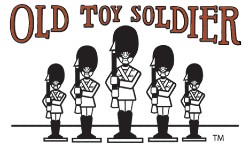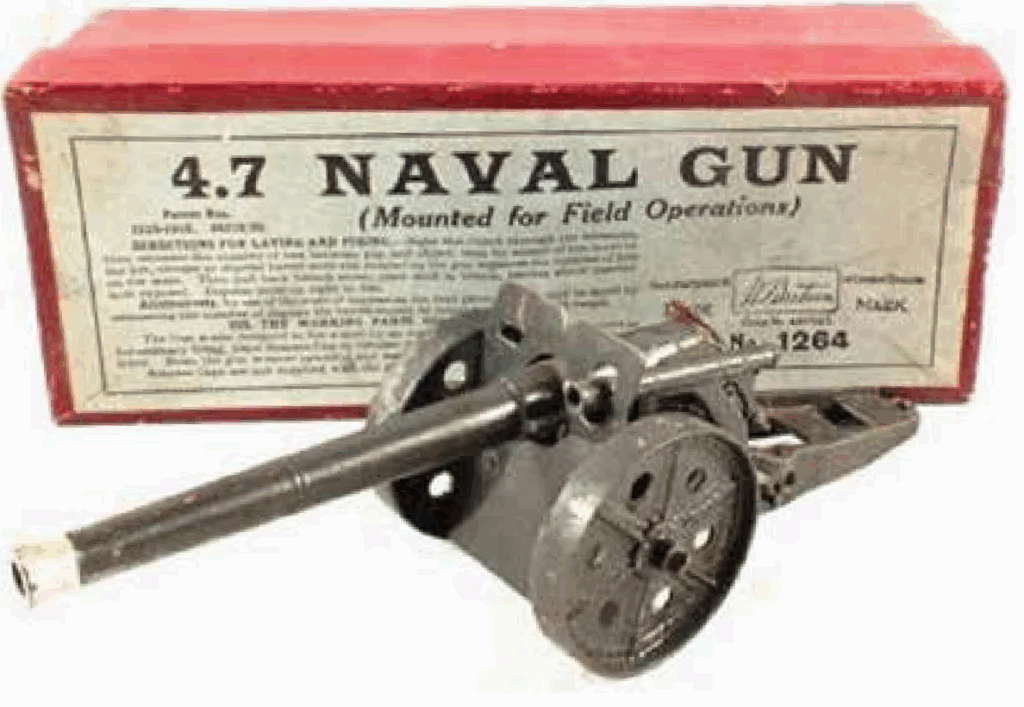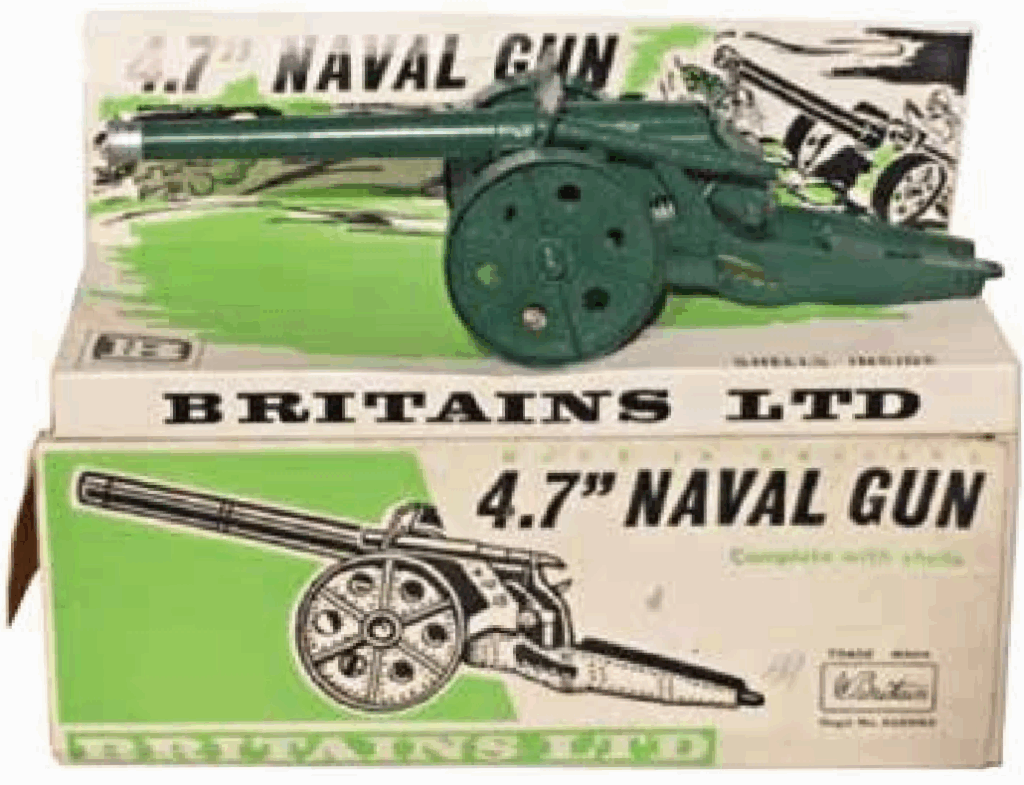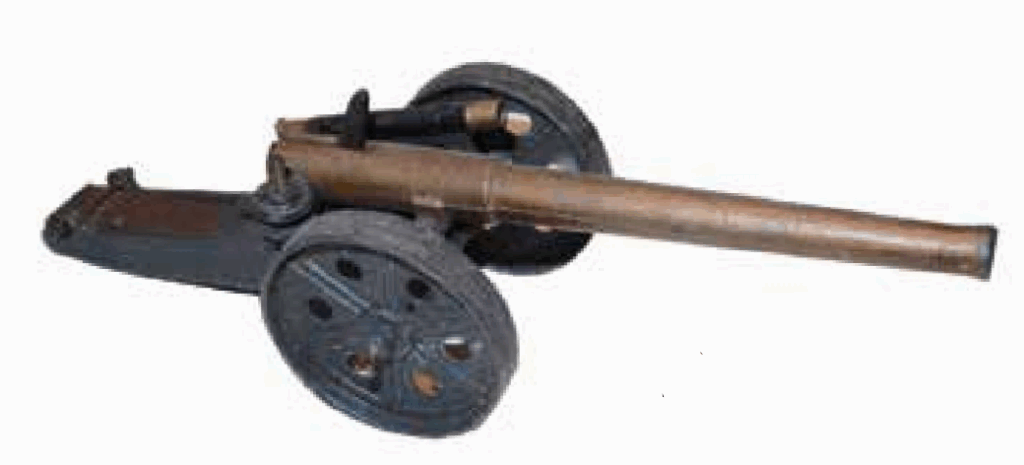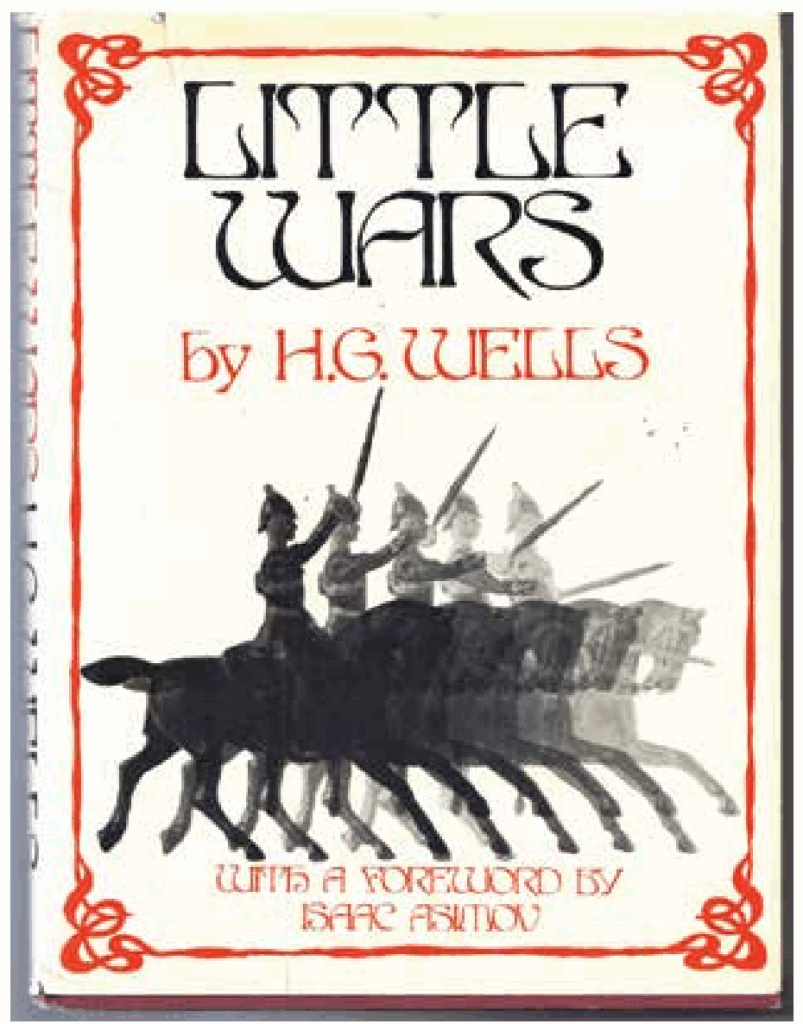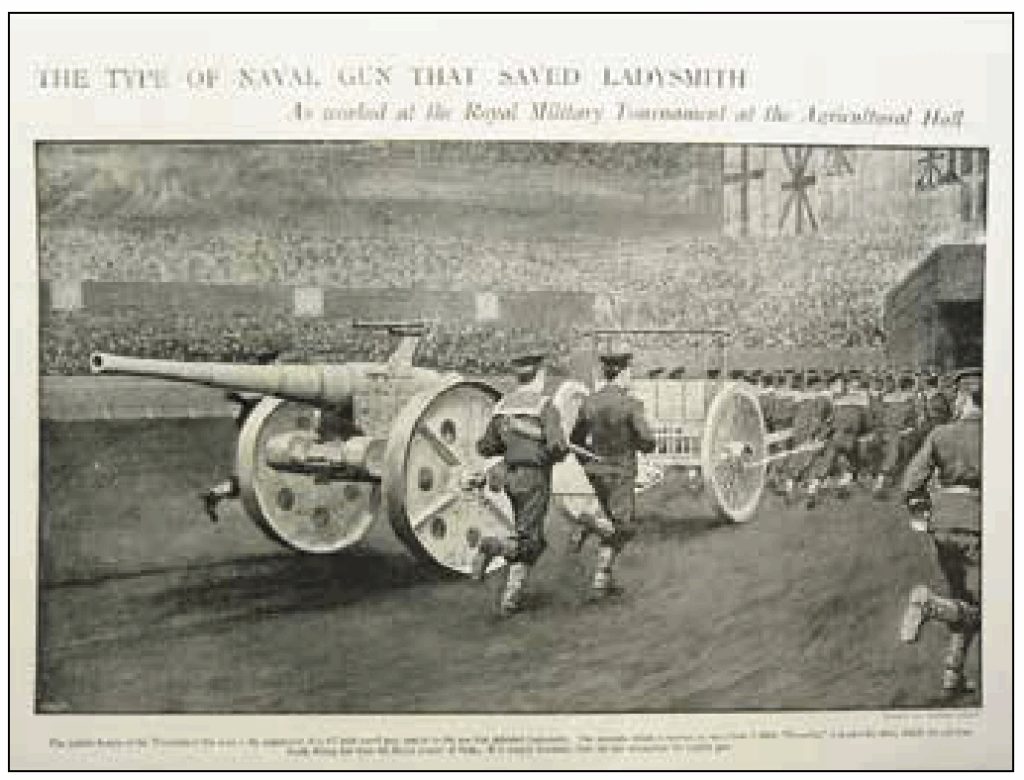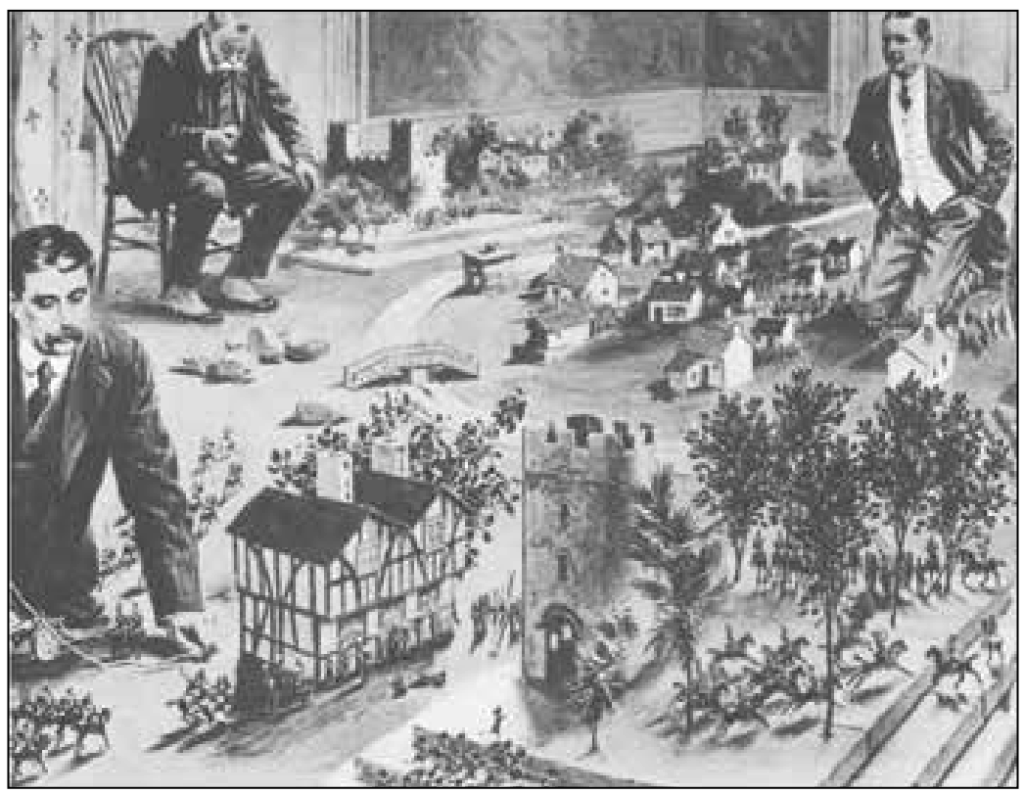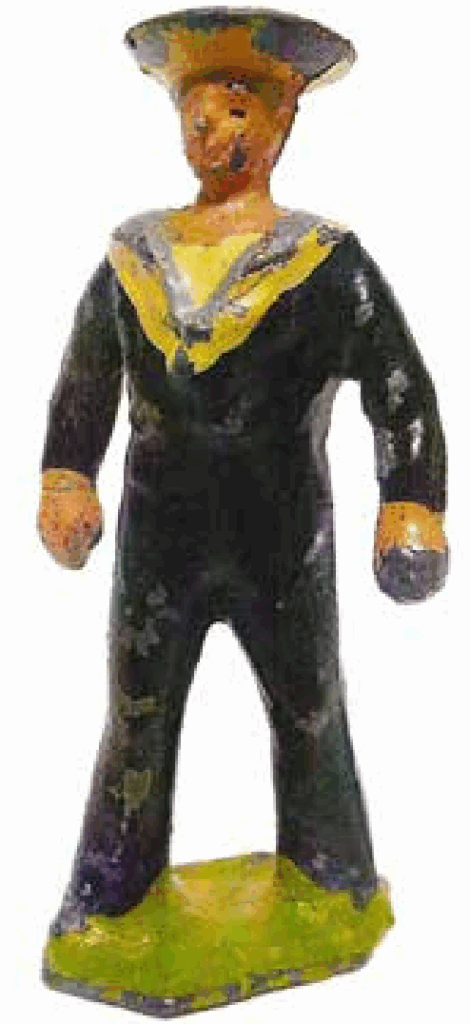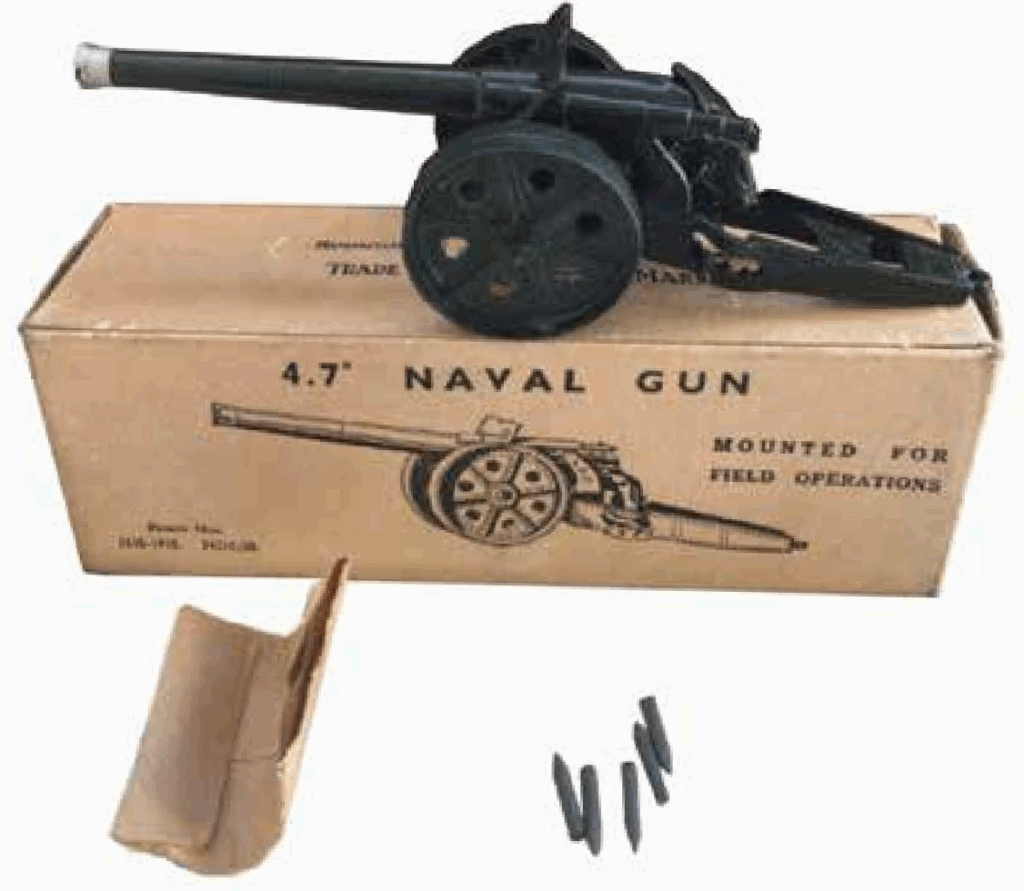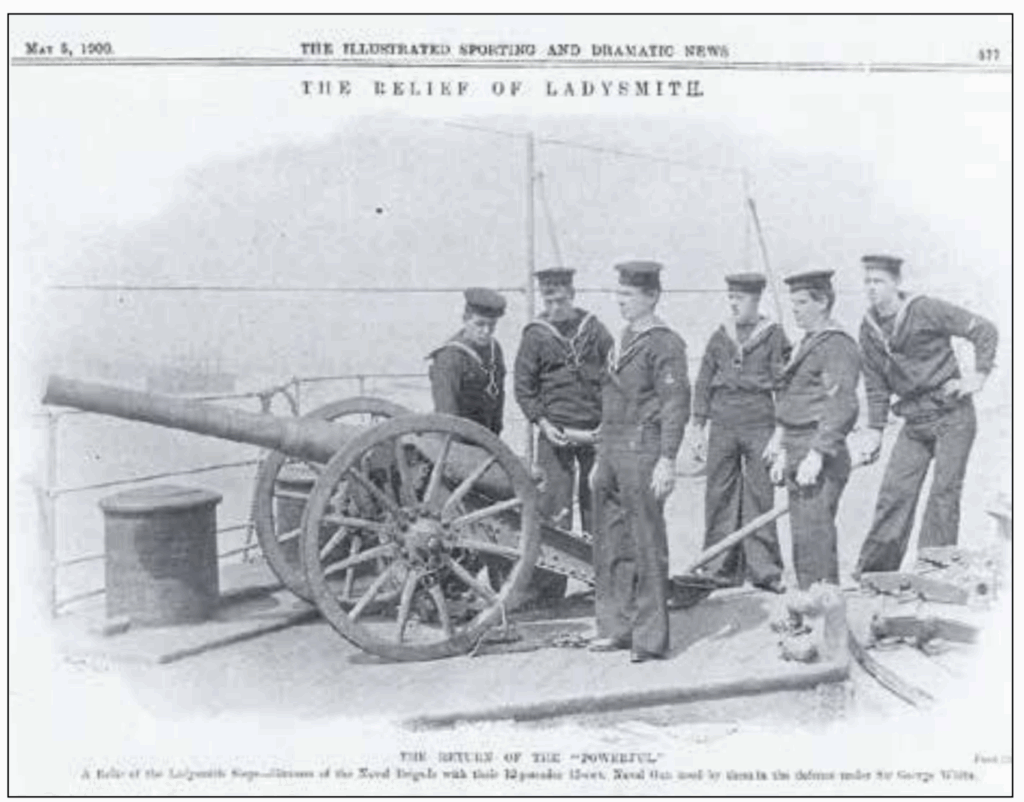This article is a slightly revised version of Norman’s earlier article published in Volume 42, Number 2. It is reproduced here for the convenience of readers and
in order to complement Bill Anderson’s more general piece on the Boer War.
Britains 4.7 Inch Naval Gun (Mounted for Field Operations) was first introduced in 1902. It was a pretty accurate model of one of those taken from Royal Navy cruisers to provide heavy artillery support during the early days of the Boer War. They were dismantled from their housings on the ships and remounted on heavy wooden gun carriages with large steel plate wheels. They fired a 45 pound shell, this providing much more substantial support than offered by the then standard 12 pounders with which the Royal Artillery and Royal Horse Artillery were equipped.
According to Joe Wallis (Soldiers of Greater Britain, pp 92-93), the gun was initially retailed at a price of two shillings. The 1902 Gamages Department Store issued a catalogue including pictures of the same piece offered at their customary discounted price of one shilling and six pence.
Wallis goes on to reference the Registered Design Number 388707, which was found on the underside of the gun barrel and which was issued by the Board of Trade in March 1902. The initial version of the gun incorporated a powerful steel spring, mounted into the trail of the gun, which powered the brass firing lever. This enabled it to propel wooden shells some considerable distance and which probably accounted for many casualties amongst Britains and other hollowcast figures! An elevating screw enabled the gun to be aimed with precision. It also included a telescopic sight as on the real thing.
Early box labels mention Patent 20775, issued to William Britains in 1894 to cover their mountain artillery gun which used essentially the same method for powering the gun. Early versions were painted pale grey. Later the colour was changed to darker and more khaki shades before Britains adopted their fumed metal finish towards the end of the First World War. This resulted in a gun metal colour which looks very appropriate.
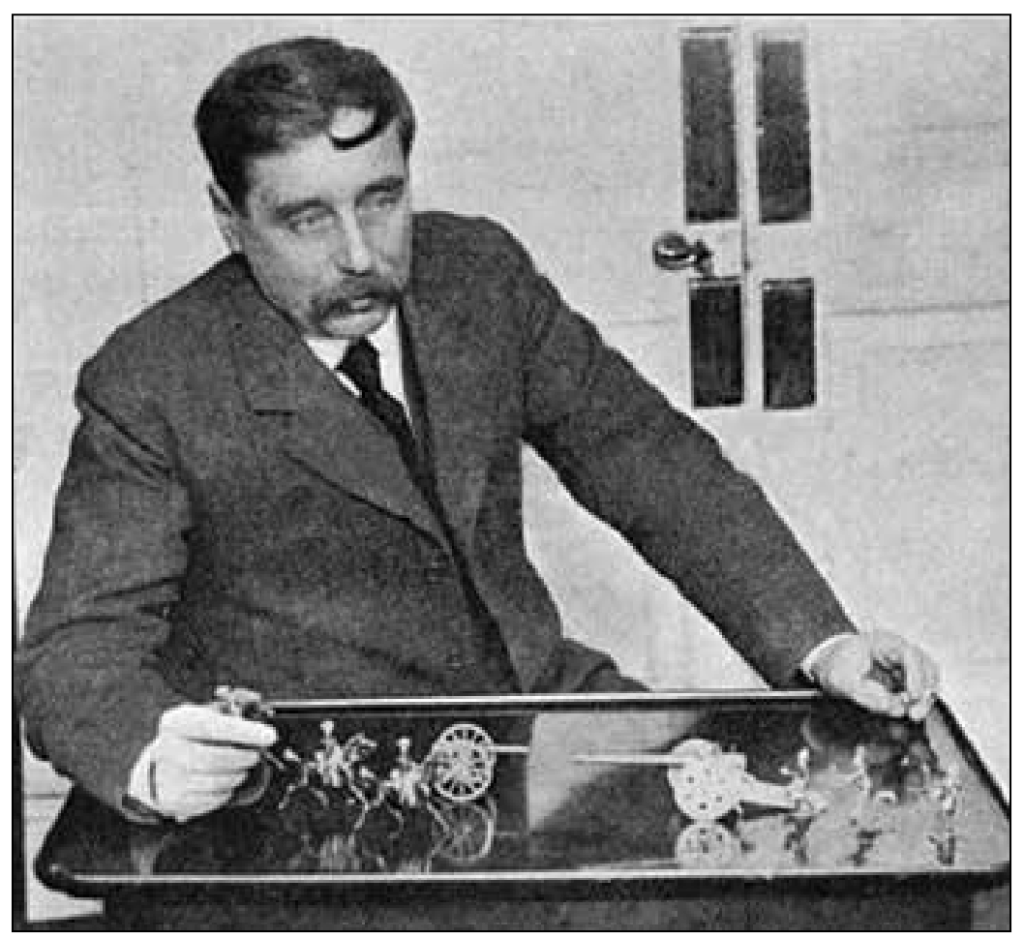
The gun was very popular with customers, including those like H.G. Wells who popularised its use in his famous book on wargaming with toy soldiers (Little Wars, 1913), in which he explicitly referred to the Britains piece:
“The beginning of the game of Little War, as we know it, became possible with the invention of the spring breechloader gun. This priceless gift to boyhood appeared some where towards the end of the last century, a gun capable of hitting a toy soldier nine times out of ten at a distance of nine yards. It has completely superseded all the spiral-spring and other makes of gun hitherto used in playroom warfare. These spring breech-loaders are made in various sizes and patterns, but the one used in our game is that known in England as the four-point-seven gun. It fires a wooden cylinder about an inch long, and has a screw adjustment for elevation and depression. It is an altogether elegant weapon.”1
The 4.7” gun was redesigned by Britains on a number of occasions and remained in their catalogue until 1979. The first redesign was a relatively modest one although it involved a new Patent Number 1215-1915. Rather than including the spring inside the trail as it was moulded the new version has an open spring. According to the patent this should enable the spring to be replaced if it became damaged. How often this ever actually occurred in practice remains obscure!
A further redesign occurred in 1931 when the gun was given a shield to protect the gunners from hostile fire and a new coiled spring mechanism, which could also fire an Amorce cap. According to Wallis it was not until 1934 that the 1264 catalogue number was assigned. This number was retained until it was renumbered as 9730 in 1962. The gun was also included in the two largest Britains display sets (#131 and 132).
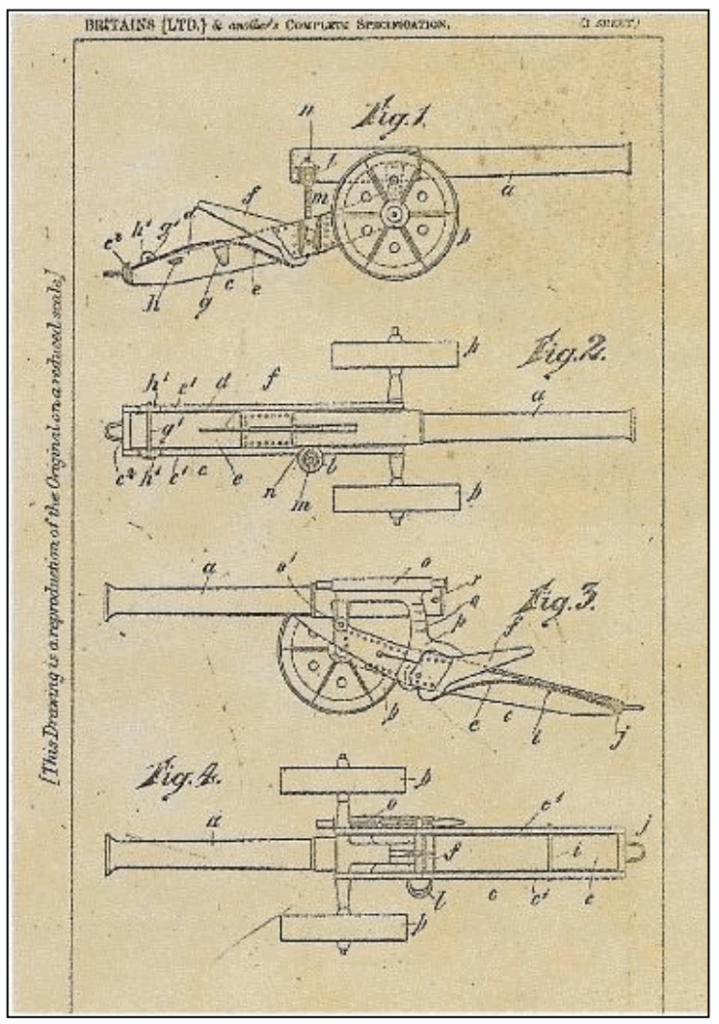
1. Little Wars can be accessed at http://www.gutenberg.org/files/3691/3691-h/3691-h.htm
